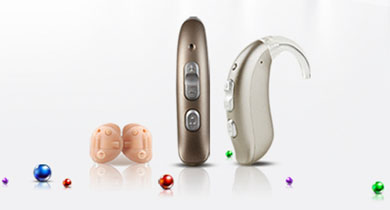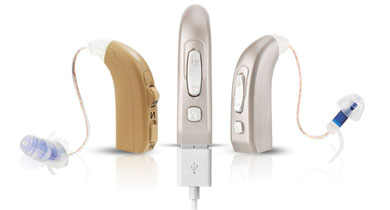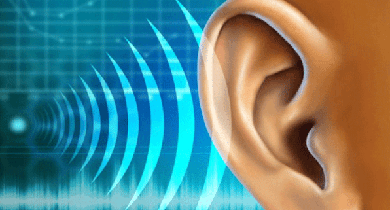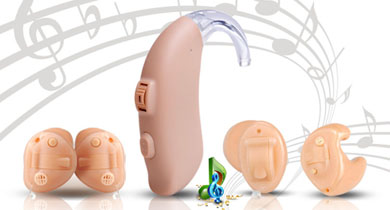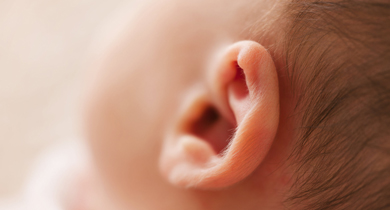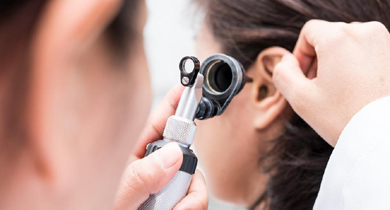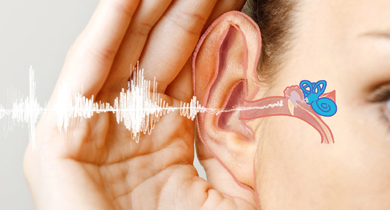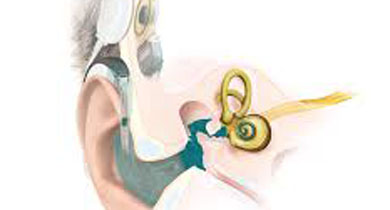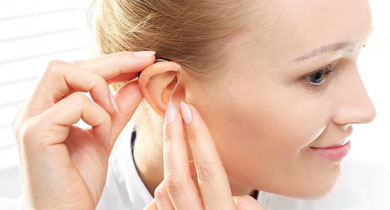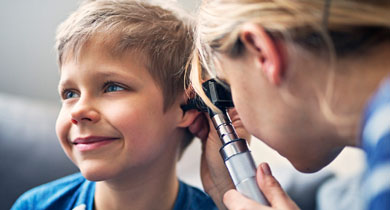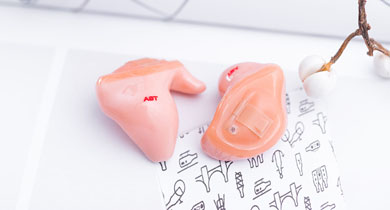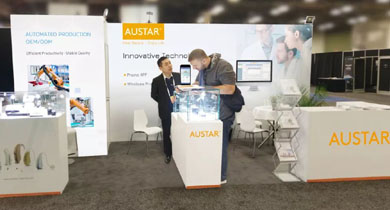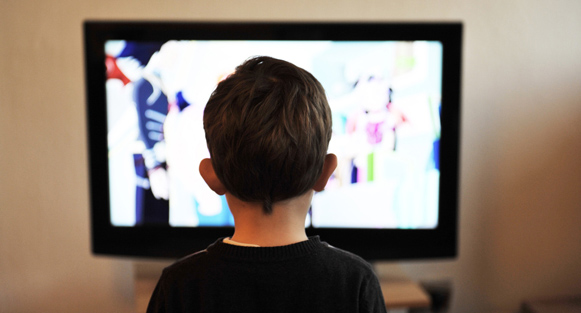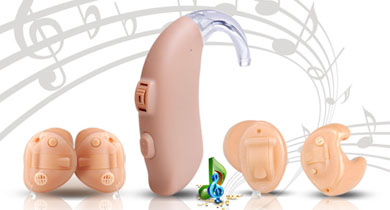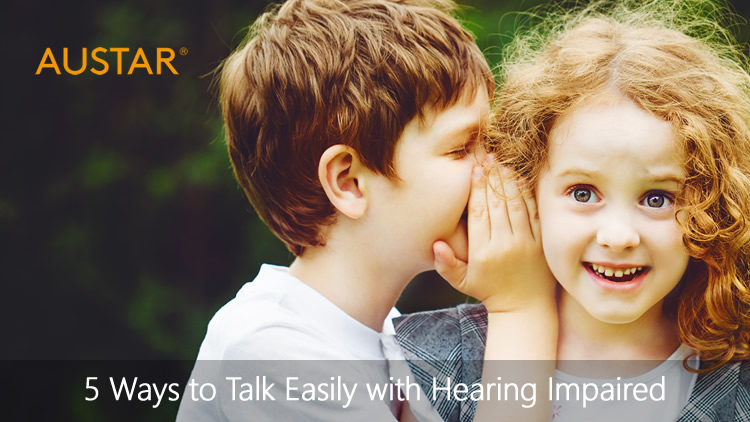
5 ways to make conversation easier for users wearing hearing aids
Many people mistakenly believe that wearing hearing aids can achieve normal hearing and immediate results, in fact, wearing hearing aids is only the beginning of the hearing rehabilitation process. Hearing aid wearers need to get used to new sounds and changes in timbre to re-establish self-confidence when communicating. Friends and family should gradually help them overcome difficulties in order to give them great help, 5 ways to help hearing aid users talk easily:

1. Keep the user focused before conveying the message and avoid talking to multiple people at the same time. We can pat the user before talking to him to help him focus on us, or ask the user to stop what they are doing to focus. For users with poor speech resolution, it is more recommended to understand one-on-one, avoid multiple conversations, and avoid distracting users.
2. Communicate face-to-face when speaking, using gestures, facial expressions, lip language to help users understand. Even when people with normal hearing communicate with others, face-to-face communication, supplemented by facial expressions and lip speech, can achieve the best results. This is even more important as a person with hearing impairment.
3. The speaker should speak clearly, talk at a normal communication distance and normal volume, and slow down the speed of speech. Often in life we have a misunderstanding, think that can not hear clearly the sound can be increased, does have a certain effect, but its effect is not as good as the normal volume to slow down the speed of speech, so in daily life we as family and friends to help our hearing impaired people with more patience, take the initiative to slow down the speed of speech.
4. Reduce background noise and try to keep users away from noise sources. For example, turn the sound off the TV or radio, or close the door to reduce noise.
5. When talking, if you find that the wearer is tired, do not force or prolong the conversation. Especially the elderly, due to age, are weaker and not suitable for long-term focused conversation.
AUSTAR: A leading professional Chinese hearing aid manufacturer and supplier, committed to improving hearing through technology for hearing-impaired users.
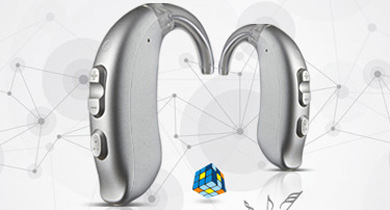
Can I Get Hearing Aids Over The Counter
Over-The-Counter hearing aids will soon be available for purchase in stores and online without a prescription. The OTC Hearing Aids will provide a wider range of options for adults with mild or mild-to-moderate hearing loss.
Some would agree with this, they said: "The facts are that current developments in digital technology should bring with such progress, truly affordable hearing aids."

But, what are FDA over-the-counter-hearing aids? According to the FDA Reauthorization Act of 2017 (FDARA), we know that:
1. OTC hearing aids will use "same fundamental scientific technology as […] hearing aids"
2. OTC hearing aids will be "available over-the-counter, without the supervision, prescription, or other order, involvement, or intervention of a licensed person, to consumers through in-person transactions, by mail, or online."
3. They will be for adults only (18+ years old)
4. They will provide adequate amplification for mild-to-moderate hearing loss
5. The user will be able to control their OTC hearing aids and customize them as they see fit
6. OTC hearing aids may include self-assessment tests
7. OTC hearing aids may include wireless technologies
 OTC Hearing aids Pros:
OTC Hearing aids Pros:
It will provide increased access to hearing devices;
eventually lead to the creation of new self-fitting hearing aid technologies by consumer electronics companies;
could lead to more regulation of the DTC hearing aid marketplace.
Cons:
It could put you at risk of improperly treating your hearing loss.
OTC will NOT drive down the costs of current hearing aid technology.
There is no guarantee that your OTC hearing aids will be programmed correctly.
OTC will lead to the demise of bad hearing care providers.
 Any suggestions can give you?
Any suggestions can give you?
One. Professionally-fitted hearing aids are currently available for purchase through state-licensed audiologists and hearing instrument specialists. The average price for a professionally-fitted hearing aid, including a hearing aid fitting and and follow up care, is $2372, according to a recent Hearing Tracker survey.
Two. For those who can't afford professional hearing aids, please contact Austar Hearing Aids Manufacturer Support. If you are not ready to pursue professionally-fitted hearing aids, but still need help hearing, please
take a look at our product for Direct-to-consumer Hearing Aids and Custom Made Hearing Aids.
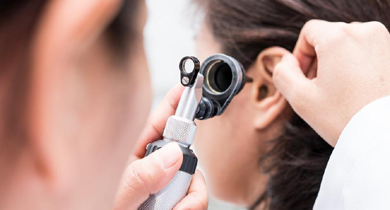
The Benefits of Binaural Hearing Aid Fitting
Many users are recommended to use binaural fitting when choosing hearing aids, which means wearing hearing aids on both ears at the same time.
What are The Benefits of Binaural Hearing Aid Fitting? We hereby list some professional answers as below.

1st, improve the ability of sound localization
Confirming the location of an object, that is, sound localization, helps us to concentrate on a sound or to avoid the interruption from a sound. As an essential ability for survival, it helps us, especially for people with hearing loss, to find the target objective or to avoid danger. 
2nd, improve the ability of speech understanding
When participating in a group conversation, the auricle of a human ear can collect sound and reduce noise. Binaural hearing makes the two auricles work together, which can magnify the sound loudness and reduce the noise in environment. It helps enhance the speech understanding in both quiet environment and noisy environment.
It is a great significance to improve the SNR(signal-to-noise ratio), that is, to improve the speech discrimination ability in a noisy environment, which helps people with hearing loss to participate in varies of group conversations.
3rd, improve sound quality and listening comfort Binaural hearing brings the sound localization, accumulation, noise reduction, and fusion , improving the sound quality, listening comfort of the sound, and the perception of music.
Binaural hearing brings the sound localization, accumulation, noise reduction, and fusion , improving the sound quality, listening comfort of the sound, and the perception of music.
If you have any questions about Binaural Hearing Aids Price please feel free to contact us.
Austar Manufacturer: Floors 1,2,4 and 5, Building B8, Biomedical Industrial Park, No.2064 Wengjiao West Road, Haicang District, Xiamen
URL: https://www.austar-hearing.net/
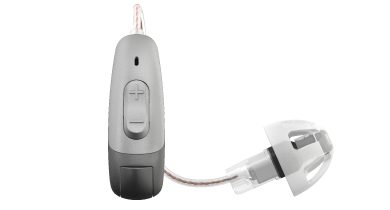
Austar Hearing Aid 2020 New Release Cadenza Y RIC
Cadenza Y RIC Hearing Aid is one of 2020 Austar New Release product. It is new toggle-switch RIC instrument. The high quality components are provided by the top suppliers from Europe and America. Every hearing aid has been passed the strictly quality inspection to make sure the device in perfect performance.
Toggle-switch Cadenza Y RIC hearing aid is a full digital and intelligent hearing aid, with 2 signal processing channels, intelligent adaptive noise reduction system high-effective adaptive feedback suppression function. Toggle-switch RIC hearing aid helps user not only enjoy a clear hearing under quiet environment, but also in noisy environment.

The 2020 New RIC Hearing Aid design show the new trend of BTE hearing aid, it meet the Ergonomics theory with comfortable wearing and Powerful functions.

You may be interested in the New toggle-switch Cadenza Y RIC hearing aid Release Date and price, Please stay tuned for more information about the Austar 2020 New Release.











